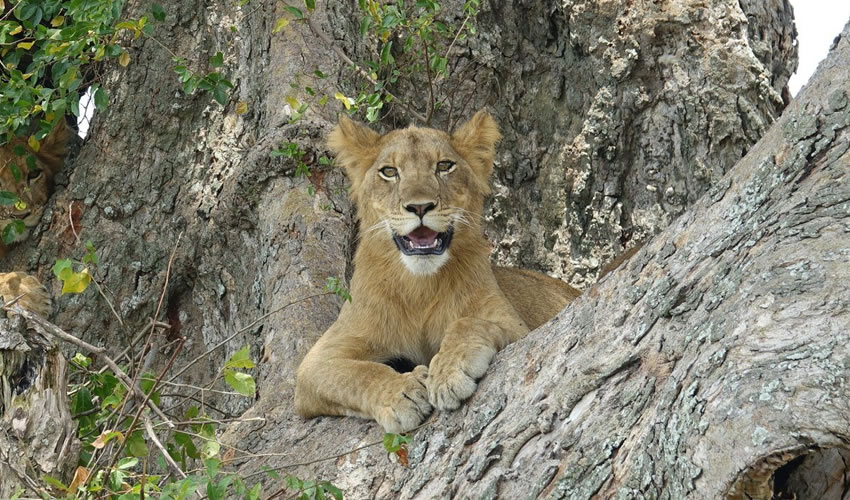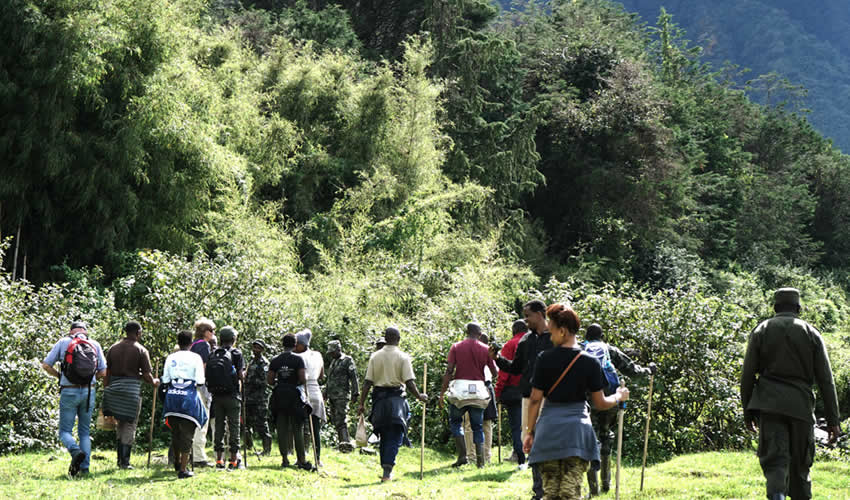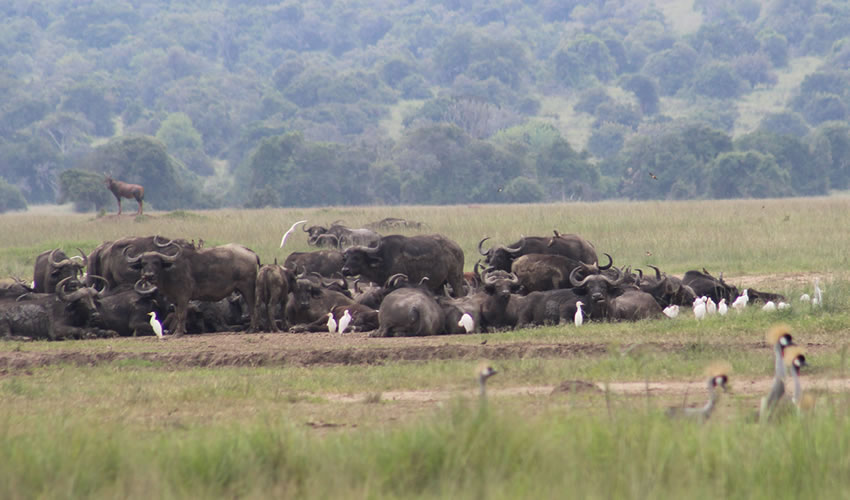Ishasha Tree Climbing Lions in Queen Elizabeth National Park

Ishasha Tree Climbing Lions in Queen Elizabeth National Park are one of the top highlights of visiting the park. To experience the best of Queen Elizabeth National Park, take a round trip to the southern part of the park. This area, covered by woodland savannah and fig trees, attracts the tree-climbing lions.
Tree Climbing Lions of Ishasha
The Ishasha sector of the park is known for its fig trees, which the lions prefer to climb. The branches of these trees offer the perfect spot for the lions to relax and serve as camouflage. During the hot hours of the day, lions rest on tree branches. On a lucky day, you might spot multiple prides on different tree branches during your game drive. However, if the lions are out hunting, you may miss them, as nature dictates.

Why Do the Lions Climb Trees?
The tree-climbing behavior of the lions in Ishasha is a rare adaptation. You may wonder, do lions climb trees? To see this behavior firsthand, book a Uganda Safari, which includes a visit to Queen Elizabeth National Park and the Ishasha sector.
The Ishasha sector is one of only two places in the world where you can spot tree-climbing lions: Ishasha in Queen Elizabeth National Park in Uganda and Lake Manyara National Park in Tanzania. Though some lions have been spotted on fig trees in Murchison Falls National Park, this occurrence is rare compared to Queen Elizabeth National Park.
Wildlife and Birding in Ishasha
Aside from the tree-climbing lions, Ishasha sector harbors wildlife like topi, buffaloes, elephants, kobs, and red river hogs. You might also encounter leopards, African civet cats, and hyenas. Bird watchers will enjoy Ishasha’s birding opportunities. You may spot species like the African thrush, yellow-billed oxpeckers, white-browed robin-chat, and greater honeyguide. The sector also hosts white-browed coucal, dusky hours bring in flying bats, and with a keen eye, you might see yellow-winged bats and nightjars in the evening.

Experiencing the Lions Up Close
Spotting lions on fig trees is a thrilling experience. Watch them relax on branches, and occasionally, you may see cubs trying to climb or a male lion with a rare black mane. These encounters enhance your African safari.
Queen Elizabeth National Park ranks as one of Uganda’s top tourist attractions. It draws visitors with its diverse wildlife and over 600 bird species. The Kazinga Channel boat cruise is a highlight, offering sightings of high concentrations of hippos and Nile crocodiles. Bird lovers will find plenty to enjoy as they spot a wide variety of species along the large shores.
Why Stay in Ishasha?
Spending a night in the Ishasha sector increases your chances of spotting the tree-climbing lions. Lions often climb trees during the hot parts of the day to escape tsetse flies, which are believed to be the reason behind this behavior. Research on this behavior is still ongoing.
Ishasha offers a variety of accommodations, mostly located outside the park gates but still within the peaceful wilderness. These lodges provide a serene atmosphere for nature lovers, where the only sound you hear is your own.

Combine Your Visit with Gorilla Trekking
After visiting Ishasha for the tree-climbing lions, consider a trip to Bwindi Impenetrable National Park for gorilla trekking. If time is limited, you can visit Ishasha on your way to Bwindi Impenetrable National Park or continue your journey to Volcanoes National Park in Rwanda for gorilla or golden monkey trekking. End your trip in Kigali before flying home.
You will have time for a short game drive in Ishasha, and many visitors have been lucky enough to encounter the lions during these drives.
Additional Activities in Ishasha
Enhance your visit by combining your game drive with a nature walk in Maramagambo Forest. This historic forest is home to millions of bats, as well as snakes, birds, and primates, which you may encounter during your walk.
Visit the Ishasha Tree Climbing Lions in Queen Elizabeth National Park and experience one of Africa’s rarest wildlife encounters.



